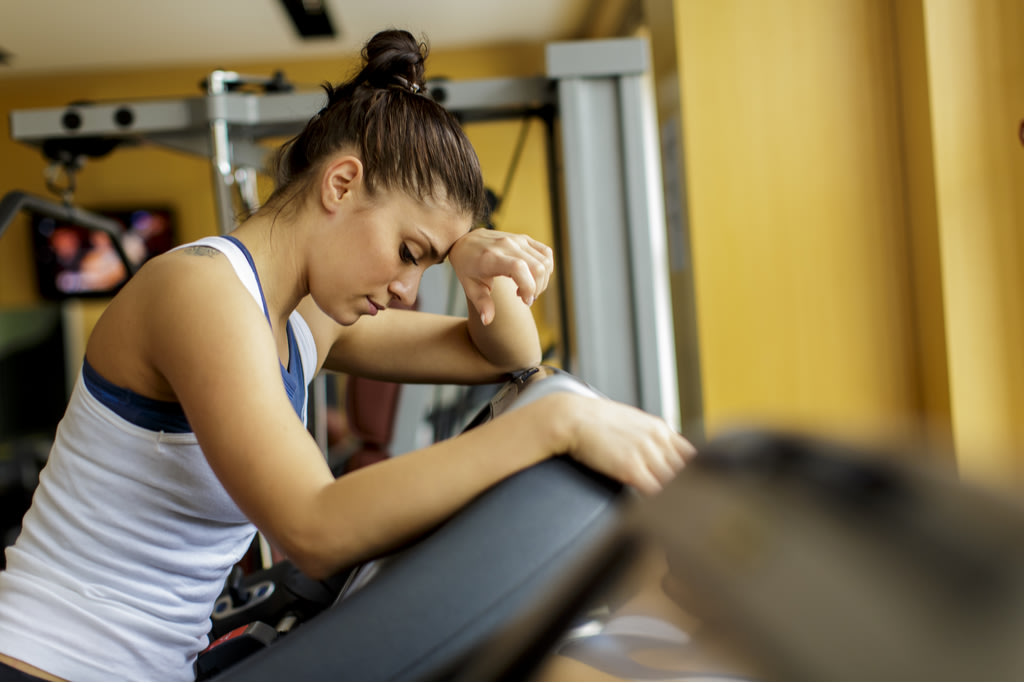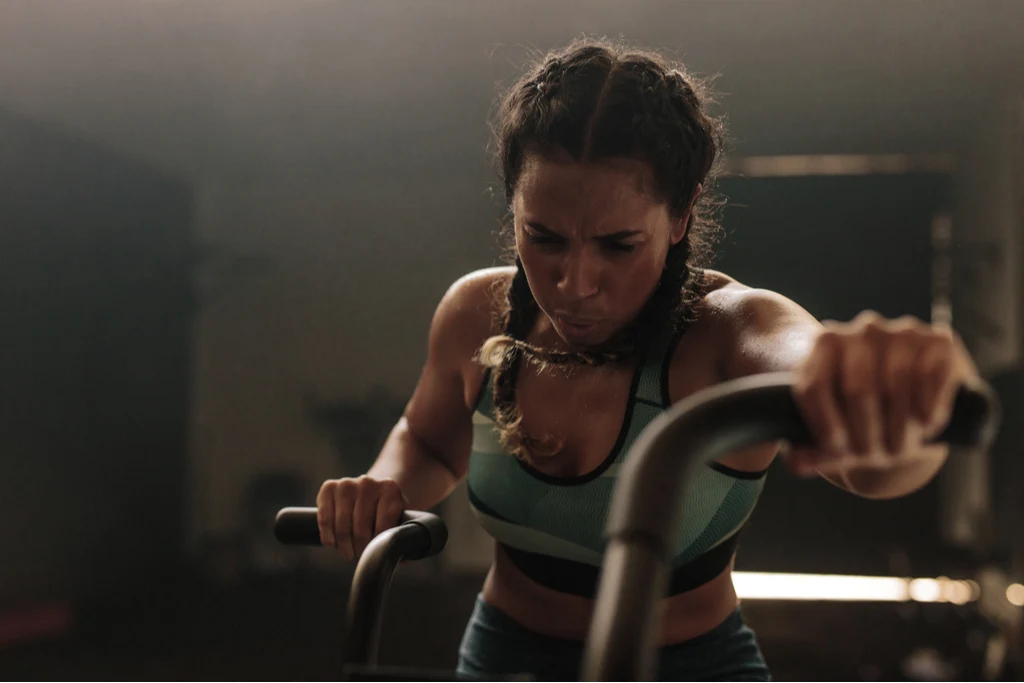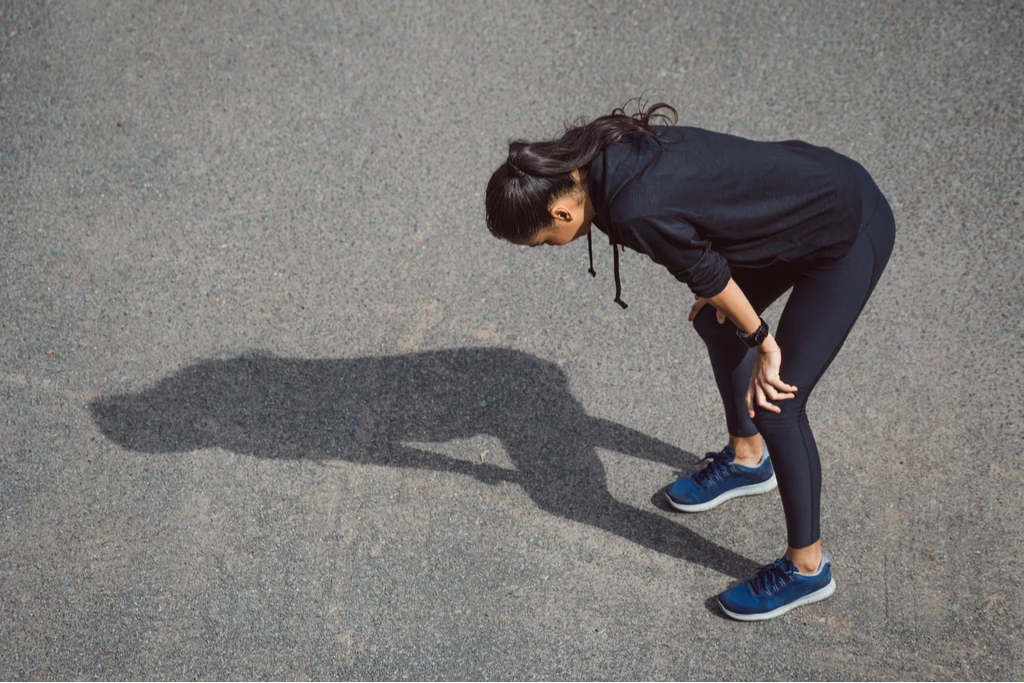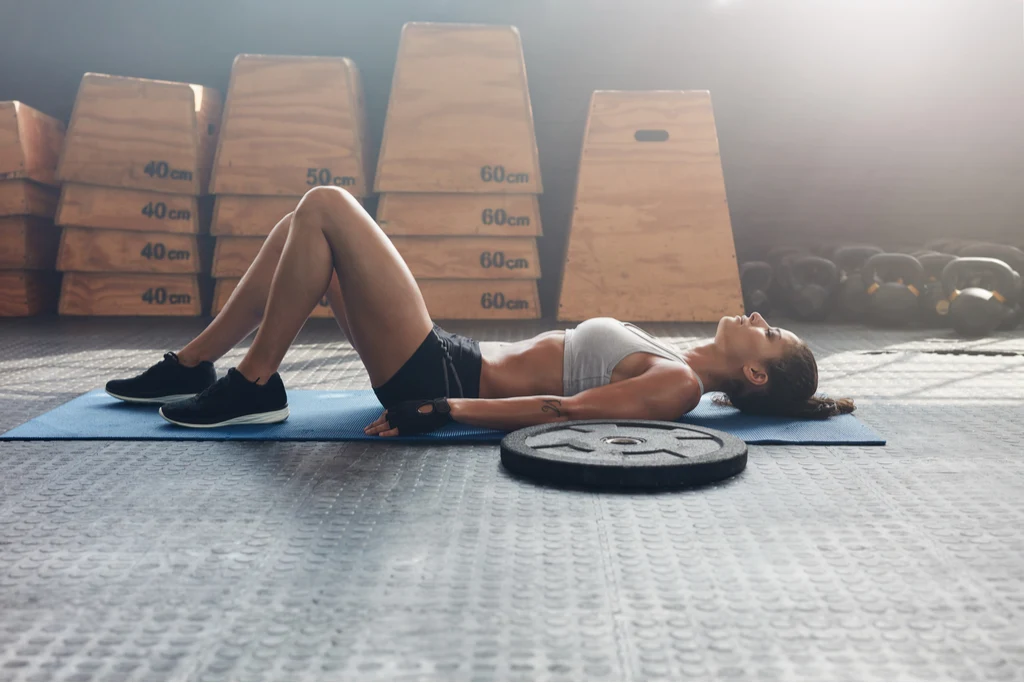Female Athlete Triad: What Is It And How Do You Prevent it?

July 22, 2022

Content warning: this article discusses a number of topics that may be triggering for some readers. This story is not intended to replace the advice of a medical professional and Sweat encourages you to consult with your trusted healthcare provider if you are experiencing health issues, body dysmorphia, negative self-talk, disordered eating or other mental health issues.
When thinking about your health and fitness goals, the focus is often on moving more and improving your diet. In reality, a woman’s journey to optimal health is far more multifaceted!
It’s important to understand how these two levers - exercise and nutrition - can affect other aspects of your overall health and wellbeing such as your menstrual cycle, fertility, bone health, stress and mental health.
For a lot of women, finding the time and motivation to work out and eat well is the hardest part. For others, prioritising rest and remembering to eat enough are bigger challenges - especially if you love exercising, have a busy schedule, are motivated by your results, or have a naturally fast metabolism.
Not eating enough for your energy requirements is where the female athlete triad can come into play.
Even if you read on and it doesn’t sound like something you would need to worry about, it’s important to be aware of the causes, signs and risks - for you AND your friends, family and workout buddies.
Just like you’d urge your sister to get a mammogram if she found a lump in her breast, knowing the signs and long-term consequences of this condition can be a reminder to always focus on your health first and encourage those around you to do the same.

What is the female athlete triad?
According to 2012 research, the condition is defined by the combination of three things - osteoporosis (low bone density), amenorrhea (the absence of your period for 90 days or more), and low energy availability (with or without disordered eating patterns).
This condition often goes unrecognised, as the three main symptoms aren’t easily visible, or the contributing behaviours are misinterpreted as signs of dedication and discipline.
However, they can have long-term consequences such as fertility issues, stress fractures or permanent fragile bones, compromised immunity, cardiovascular issues and mental health challenges.
The female athlete triad is more prevalent for runners, gymnasts and dancers, where there is often an added pressure to look a certain way or maintain a certain weight, but it can affect anyone who isn’t eating enough food to meet the energy requirements of their daily activities. It can also be more common in people with competitive or perfectionist tendencies.

How does overtraining and undereating affect the body?
When your body doesn’t have enough energy for your daily activities and bodily functions, hormones can be impacted and physiological functions can slow down or stop completely.
According to the Sport Science Institute at National Collegiate Athletic Association, not consuming enough calories to support your active lifestyle can lead to a negative energy balance, increasing your risk of absent periods, decreased bone density, stress fractures, osteoporosis and cardiovascular disease.
Research has highlighted a deficiency in macronutrients, particularly protein and healthy fats, can also affect your body’s ability to build bone, maintain muscle mass, repair tissue or recover from an injury.
In a 2014 Consensus Statement from the International Olympic Committee published by the British Journal of Sports Medicine, they prefer the term Relative Energy Deficiency in Sport (RED-S).
This is a broader term for the syndrome and the way it can impair multiple functions such as metabolic rate, menstrual function, bone health, immunity, protein synthesis and cardiovascular health (as well as highlighting how it can affect men, too!).
Having enough good-quality fuel in the tank is a must!

How can you prevent it?
Nourish your body
The main thing is to ensure your body is getting enough nutrients and energy - not only for your workouts, but for all your daily movement and physiological functions. Even your brain requires a big amount of energy!
Fun fact - research shows your brain activity alone accounts for about 20% of your daily calorie expenditure - hence why brain fog is so common when you’re tired or haven’t eaten enough!
Try to eat three nourishing main meals a day with some carbs, fat and protein, with extra snacks in between if you’re feeling hungry or need a boost before a workout.
Rest is key
Prioritise your rest days and sleep - it’s where the magic happens! Rest allows your body to recover, repair and grow stronger. If you don’t get enough rest, you risk feeling fatigued, increasing your stress level, experiencing hormonal changes, and damaging your muscles before they have had a chance to adapt.
Track your cycle
Tracking your menstrual cycle in a calendar or period-tracking app can help you figure out what is normal for you and pick up any unusual changes.
You can also keep track of your symptoms and how your body feels and plan your workout schedule according to each stage of your cycle!
Set healthy goals
Take a look at your health and fitness goals and work towards things that are based on health and performance. This could be eating more fruit and vegetables, drinking more water, completing a Sweat program or hitting a new PB at the gym.
Even if losing weight is a goal, make sure you are doing it in a healthy and sustainable way. A good question to ask yourself - what am I striving for and why?
Consult a trusted healthcare provider if you are experiencing any of these symptoms:
Your period has become irregular or been missing for over 90 days.
You have started a new exercise routine and are losing weight rapidly. Mayo Clinic recommends 1-2 pounds (0.5-1kg) per week for safe weight loss.
You are tired, sick, frequently getting injured or your workout recovery and healing is slow.
Can it be treated and reversed?
In most cases, yes, but it depends on the age of the person and how long it has gone on for - each case is different. Your healthcare provider will need your complete medical and lifestyle history to provide you with a plan. You may also be tested for thyroid issues, bone density, PCOS or other medical conditions.
Optimal treatment includes adequate food intake (monitored by a nutritionist or dietician if necessary), until the person is at a healthy weight with a regular menstrual cycle restored. A reduction in exercise may also be recommended, and professional support can help with positive mindset changes.
Depending on the age and degree of the condition, regular bone scans may be done to monitor improving bone density. In young women or in severe cases, a loss of bone density in your developing years can result in long-term osteoporosis.

A more empowered you starts with Sweat, and our editorial team is here to bring you the latest fitness tips, trainer recommendations, wellbeing news, nutritional advice, nourishing recipes and free workouts.
* Disclaimer: This blog post is not intended to replace the advice of a medical professional. The above information should not be used to diagnose, treat, or prevent any disease or medical condition. Please consult your doctor before making any changes to your diet, sleep methods, daily activity, or fitness routine. Sweat assumes no responsibility for any personal injury or damage sustained by any recommendations, opinions, or advice given in this article.
Fitness